




| Greater Flamingo (Phoenicopterus ruber (Linnaeus, 1758)) |





|
|
Scientific name: Phoenicopterus ruber (Linnaeus, 1758) Common name: Greater Flamingo Other names: Greater Flamingo (Phoenicopterus ruber roseus), Caribbean Flamingo (Phoenicopterus ruber ruber) French name: Flamant rose Order: Phoenicopteriformes Family: Phoenicopteridae Size: Wingspan : 140-165 cm; Weight : 2500-3500 g. Females are slightly smaller than males. Habitat: Salt waters in coastal areas: lagoons, ponds and lakes, large river deltas. Food: The Greater Flamingo exclusively feeds on Brine Shrimp (Artemia salina) it filters from water using its beak equipped with some kind of filter plates. The Flamingo's pink colour comes from the shrimps' pigments. Many Flamingo may die, in particular in winter, when this single food source is unavailable. Nesting: Greater Flamingos nest in huge colonies on mud islands. Females lay a single egg per year in a cup-shaped nest made up of mud. About 10 days after hatching out, chicks gather in large groups called 'creches'. Parents take care of their own chick and they are able to locate it in the group. Migration: Some birds are sedentary, other ones are migratory. Geographic area: The Phoenicopterus ruber roseus subspecies (Greater Flamingo) breeds in the Mediterranean Basin, the southern part of Asia and in Africa, the Phoenicopterus ruber ruber (Caribbean Flamingo) breeds in America, in the Caribbean's and on the Galápagos Islands. |
The Greater Flamingo is a large bird with a pale pink body, with lengthy pink legs and with palmate feet. The beak is short and curved. It ends with a black tip. The position in flight is typical with outstretched neck and legs. You can see the bright colours of the wings during flight. The primary and secondary flight feathers are black, the wing coverts are red. Juveniles have grey legs and a dirty white plumage with brown marks. While resting, the Greater Flamingo often stands on one leg with the head hidden under the plumage. |
| [To know more about the Greater Flamingo] [Next picture] [Top] |
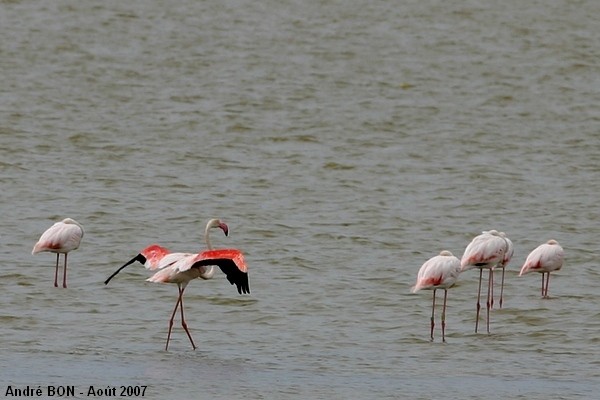
|
The Fishermen Village at Canet-en-Roussillon (south of France), on the lake's shore, is a very nice place. A small foot track on the left leads to a wildlife observation spot where you have a good chance to observe Greater flamingos. |
| [To know more about the Greater Flamingo] [Next picture] [Previous picture] [Top] |
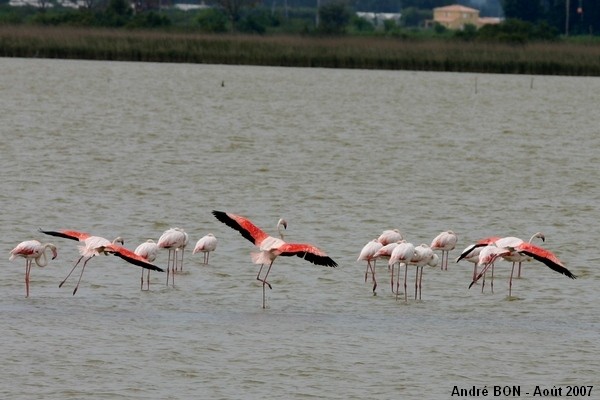
|
Though the sunlight was not very good, it has not been very difficult to shoot these pictures. The observation hut is equipped so that you can put the camera on a stable support. The focus is pre-adjusted on the group of Flamingos (a little far away for my 300mm lenses, I had to crop the picture). You just need to wait a short while for something to happen in the scene. |
| [To know more about the Greater Flamingo] [Next picture] [Previous picture] [Top] |
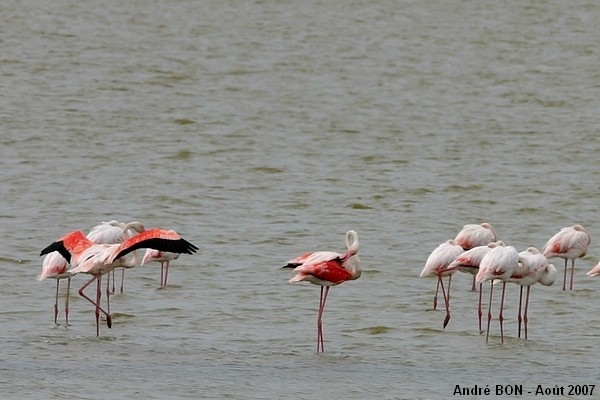
|
Flamingos are more beautiful with wide open wings. |
| [To know more about the Greater Flamingo] [Next picture] [Previous picture] [Top] |
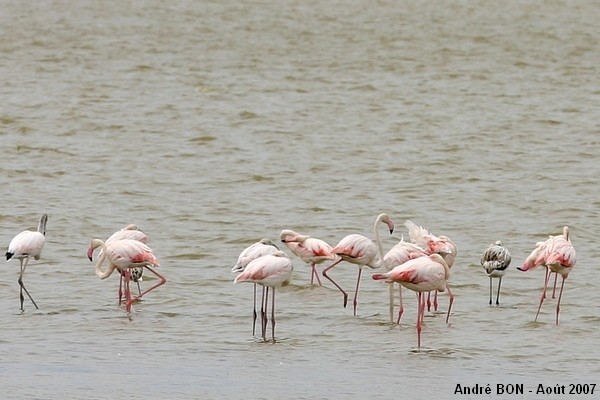
|
You can easily recognize juveniles with their dirty white colour. |
| [To know more about the Greater Flamingo] [Previous picture] [Top] |
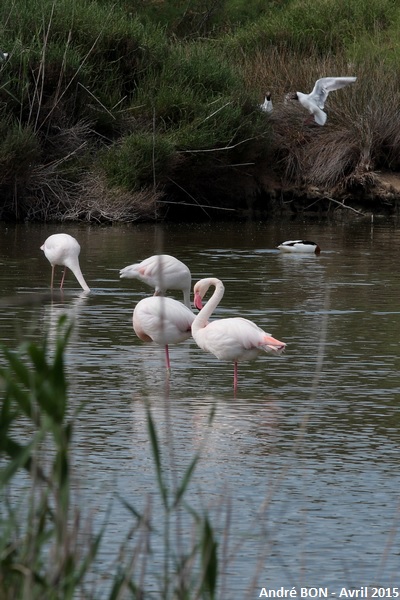
|
While in Valencia, we took the opportunity to go bird watching at the Albufera Natural Park with its large lake very close to the seaside. Just a little before arriving we stopped at the Racó de l'Olla Interpretation Centre which is equipped for bird watching. There are a few Greater Flamingos over there. |